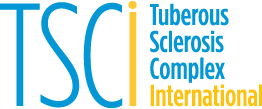What is TSC?
Tuberous sclerosis complex (TSC) is a genetic disorder that causes non-malignant tumors to form in many different organs, primarily in the brain, eyes, heart, kidney, skin and lungs.
The aspects of TSC that most strongly impact quality of life are generally associated with the brain: seizures, developmental delay, intellectual disability and autism. However, many people with TSC are living independent, healthy lives and enjoying challenging professions such as doctors, lawyers, educators and researchers. The incidence and severity of the various aspects of TSC can vary widely between individuals—even between identical twins.
How Many People Have TSC?
At least two children born each day will have tuberous sclerosis complex. Current estimates place tuberous sclerosis complex-affected births at one in 6,000. Nearly 1 million people worldwide are estimated to have TSC, with approximately 50,000 in the United States. Many cases may remain undiagnosed for years or decades due to the relative obscurity of the disease and the mild form symptoms may take in some people.
How Does a Person Develop TSC?
Tuberous sclerosis complex is a genetic disease that can be inherited from one parent with TSC or can result from a spontaneous genetic mutation. Children have a 50 percent chance of inheriting TSC if one of their parents has this condition. At this point, only one-third of TSC cases are known to be inherited. The other two-thirds result from a spontaneous and unpredictable mutation occurring during conception or very early development of the human embryo.
How is TSC Diagnosed?
Because TSC can manifest in so many different ways, diagnosis is generally made when physicians identify any two major features of TSC in one individual. One major feature is cardiac rhabdomyoma, an abnormal growth in the heart muscle generally found in young children and sometimes found by ultrasound examination during pregnancy. Other major features include specific abnormal skin growths or skin pigmentation, specific non-malignant tumors or growths such as subependymal nodules or subependymal giant cell astrocytomas (SEGAs) in the brain, lymphangioleiomyomatosis (LAM) in the lungs, angiomyolipomas in the kidney(s), and tubers in the brain or hamartomas in the eye. Also, there are other minor features of TSC that might be diagnostic if found with a major feature in the same person. TSC can also be diagnosed by genetic testing described below.
This is a Table Format
| Title 1 | Title 2 | Title 3 |
|---|---|---|
| Aenean libero metus ullamcorper | sit amet lacus id | molestie interdum vel lacus massa ut dignissim finib |
| Aenean libero metus ullamcorper | sit amet lacus id | molestie interdum vel lacus massa ut dignissim finib |
| Aenean libero metus ullamcorper | sit amet lacus id | molestie interdum vel lacus massa ut dignissim finib |
